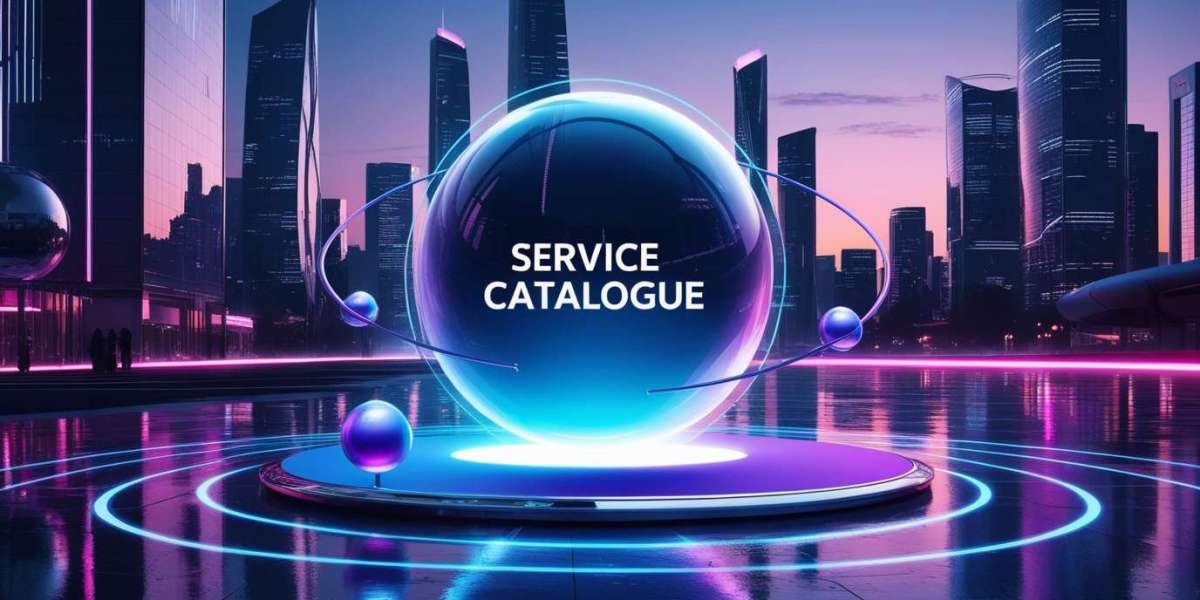In today’s enterprise IT landscape, delivering reliable, consistent, and efficient services to internal and external users is a top priority. But without a structured approach, IT teams often struggle with ad hoc requests, unclear service ownership, and inconsistent delivery. That’s where service catalog design and implementation become a game-changer.
A well-designed service catalog acts as the storefront of your IT organization—making services accessible, transparent, and measurable. In this guide, we’ll explore what a service catalog is, why it’s essential, and how to design and implement one that aligns with your business goals.
What Is a Service Catalogue?
A service catalog is a centralized, structured list of all IT services offered by an organization, presented in a user-friendly and business-aligned format. It typically includes
- Service names and descriptions
- Categories (e.g., hardware, software, access, cloud)
- Service levels (SLAs, availability)
- Pricing or chargeback details
- Request and fulfillment processes
- Ownership and support contacts
The catalogue bridges the gap between IT and its customers—clarifying what IT delivers, how it’s accessed, and what to expect.
Request a quote at https://ess.net.in/service-catalogue-design-and-implementation/.
Why Is a Service Catalogue Important?
Implementing a well-structured service catalogue offers multiple benefits:
✅ 1. Transparency and Accountability
Stakeholders can clearly see what services are available, who owns them, and what they include.
✅ 2. Improved User Experience
Employees can easily request services through a self-service portal, reducing the need for back-and-forth emails or tickets.
✅ 3. Standardization of Delivery
Each service follows defined workflows, leading to consistent performance and faster fulfillment.
✅ 4. Better Resource Management
IT can track service usage, allocate resources more efficiently, and prioritize based on business value.
✅ 5. Foundation for Automation
Once services are defined and documented, they can be automated through ITSM tools or digital workflows.
Types of Services in a Catalogue
A comprehensive service catalogue typically includes
- Business Services (e.g., payroll, email access, CRM tools)
- Technical Services (e.g., server hosting, backup & recovery, VPN)
- Support Services (e.g., password reset, software installation)
- Cloud & Infrastructure Services (e.g., virtual machines, containers)
Each service can be tailored for internal departments (HR, finance, engineering) or external customers.
Steps to Design and Implement a Service Catalogue
Designing a service catalog is not just a documentation task—it requires strategic alignment, cross-functional collaboration, and proper tooling. Follow these steps to build a successful catalog:
Step 1: Identify and Categorize Services
Start by auditing the services your IT department currently provides. Interview stakeholders, review support tickets, and map out service dependencies. Categorize services into logical groups (e.g., access requests, hardware provisioning, application support).
Step 2: Define Service Components
For each service, document:
- Service name
- Description (in business-friendly language)
- Target users (e.g., all staff, finance team)
- Service owner
- SLAs (e.g., response time, resolution time)
- Fulfillment workflow
- Dependencies (e.g., software licenses, hardware availability)
- Pricing (if applicable)
- Support hours and escalation paths
Step 3: Choose a Service Catalogue Tool
Use ITSM platforms like
- ServiceNow
- BMC Helix
- Freshservice
- Ivanti
- ManageEngine ServiceDesk Plus
These tools offer templates, workflows, automation, and integrations with ticketing, CMDB, and approval systems.
Step 4: Design the Self-Service Portal
Design a user-friendly front end that allows users to
- Search or browse services
- View descriptions and SLAs
- Submit requests or incidents
- Track progress in real time
Keep the UI simple and intuitive. Group services by department or function, and use visuals (icons, banners) to improve navigation.
Step 5: Build Workflows and Automations
Behind every service should be a clear, consistent process. Define the steps for:
- Request submission
- Approval (if needed)
- Task assignment
- Fulfillment
- Closure and feedback
Where possible, automate approvals, assignments, or software installations to reduce manual effort.
Step 6: Train, Launch, and Communicate
Before go-live:
- Train IT and end users on the new portal and catalog.
- Share internal announcements or demos
- Ensure executive buy-in and visibility
Collect feedback in the first few weeks to fine-tune categories, descriptions, or workflows.
Step 7: Monitor, Optimize, and Evolve
A service catalog is a living document. Review it quarterly to:
- Add or remove services
- Update SLAs or workflows
- Adjust for business changes or user feedback
- Monitor metrics like usage, request volume, and satisfaction
Contact us at https://ess.net.in/contact/.
Benefits Beyond IT
Though IT typically owns the service catalog, the benefits reach across departments:
- HR: Automate onboarding with bundled services (e.g., laptop, email, payroll access)
- Finance: Enable cost recovery via chargeback or showback models
- Procurement: Align asset and license purchasing with actual service demand
- Executives: Gain insight into IT’s business value with usage reports and KPIs
A well-crafted service catalog transforms how IT delivers value to the organization. It empowers users with clarity and self-service while giving IT the structure and efficiency it needs to scale. Whether you're just starting or improving an existing catalog, the key is aligning services with business outcomes.
By following a structured design and implementation process, organizations can reduce friction, accelerate fulfillment, and move one step closer to a modern, customer-focused IT organization.
About us
At ESS, we understand the intricate demands of the modern business landscape. As a premier enterprise IT solutions company, we are committed to empowering organizations with cutting-edge technology and innovative solutions. Our mission is to seamlessly integrate technology into your business processes, ensuring efficiency, scalability, and long-term success.
Contact Us


